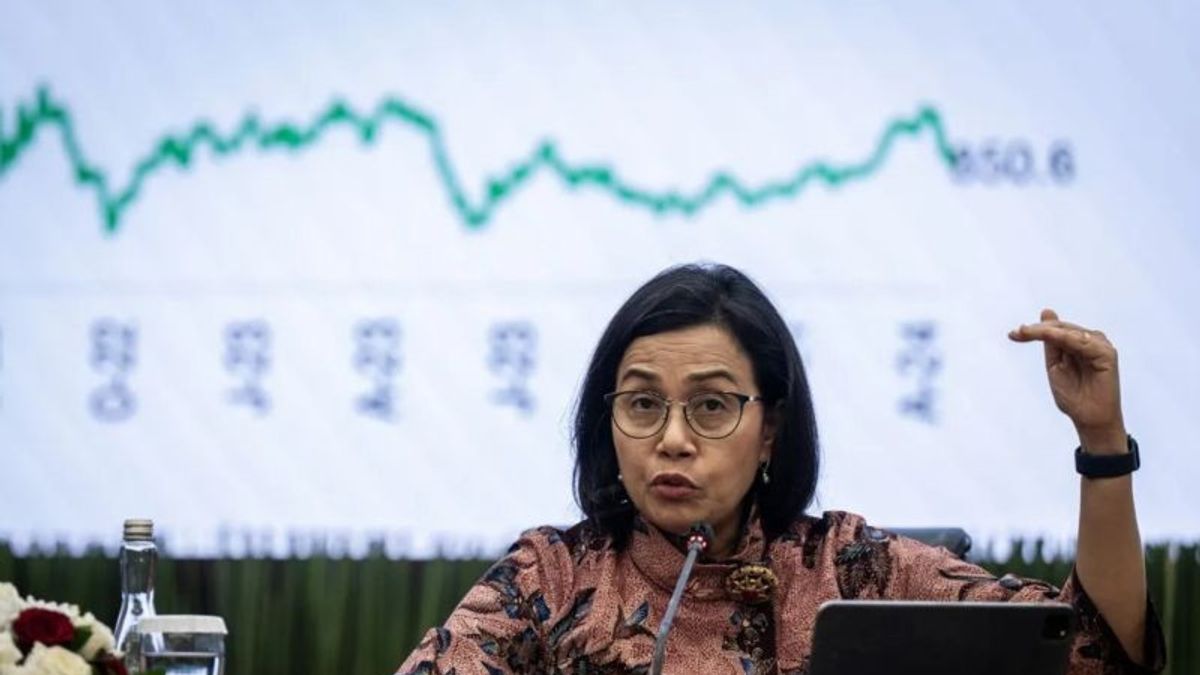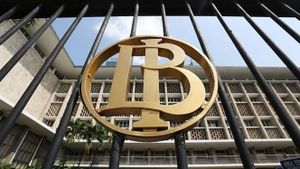JAKARTA - Government debt continues to be in the spotlight. Starting from the incumbent President's debt legacy to the upcoming President to the swelling debt ratio target of 2025. Various parties question the Government's ability to manage debt.
President Joko Widodo is said to be the Head of State of the Republic of Indonesia who left the largest debt after reform. Based on data from the Ministry of Finance as of March 2024, Government debt was recorded at IDR 8,262.10 trillion. This value is much higher than the debt value at the beginning of Jokowi's leadership period, which is the legacy of President Susilo Bambang Yudhoyono (SBY), which amounted to IDR 2,608.78 trillion.
The ratio of debt to gross domestic product (GDP) has also increased sharply. The debt ratio in 2014 was at the level of 24.75 percent, then rose to 38.79 percent in March 2024.
In comparison, Megawati Soekarnoputri passed on a debt of Rp1,299 trillion to the SBY government, only up about 2 percent from the beginning of her leadership of Rp1,273 trillion. Meanwhile, the debt ratio was successfully reduced from 77.32 percent in 2001 to 56.50 percent in 2004.
In the next regime, namely the SBY government, the increase in debt was recorded at around Rp. 1,310 trillion. Relatively small when considering the increase occurred within 10 years (2004 to 2014). The debt ratio was also reduced again to the level of 24.75 percent.
SEE ALSO:
Main Economist of the Department of Economic Research and Regional Cooperation of the Asian Development Bank (ADB) Arief Ramayandi said that basically there is no standard regarding debt ratio. The World Bank does issue a standard debt ratio, which is at the 60 percent level. However, developed countries such as the United States and Japan have debt ratios above 100 percent to 200 percent of GDP, and still show good economic management.
Therefore, he emphasized that the important part of the government debt is its management management.
Debt management
One of the main factors that trigger the surge in government debt in the Jokowi regime is the COVID-19 pandemic. There was a significant increase in the 2019 to 2020 period, where government debt rose by around Rp. 1,300 trillion and debt ratio rose from 29.80 percent to 38.68 percent.
Although the debt ratio is maintained below the safe limit of 60 percent of GDP, as regulated in Law (UU) Number 17 of 2003 concerning State Finance, the spike that occurs still needs to be a concern.
In approving the debt portfolio, the Government admits to taking a careful, opportunistic, and measurable management stance. The issuance of Government Securities (SBN) is the Government's main strategy to at the same time support domestic financial market development. SBN dominates the composition of Government debt by 88.05 percent. Most of SBN ownership is controlled by local players, including Bank Indonesia (BI). BI has 21.3 percent of domestic SBN which is used as an instrument for monetary management.
The government is also careful with the period of debt procurement. Currently, the average weighted maturity (ATM) of the Government's debt is around 8 years.
In addition to debt financing, the Government also continues to boost state revenues. At the closing of the 2023 State Budget, the performance of state revenues was able to push the primary balance into the positive zone with a value of Rp92.2 trillion, after staying in the negative zone for 12 years.
The primary balance surplus indicates that state revenue is sufficient to finance state spending as well as pay all or part of the principal and interest on debt. This means that the Government does not need to withdraw new debts to pay off debts.
That is what the Director General of Financing and Risk Management (DJPPR) of the Ministry of Finance of Suminto meant, that the Government's debt is not sufficient, only in terms of outstanding. Although the amount of debt is growing, GDP and revenues are also getting higher.
The government is trying to maintain the performance of state revenues. Throughout the first quarter of 2024, the State Budget has consistently experienced a surplus, which also maintains a surplus of primary balance.
Despite the surplus, the Government continues to attract debt. The realization of debt withdrawals as of March 2024 reached IDR 104.7 trillion. Finance Minister Sri Mulyani said debt withdrawals were still carried out to anticipate market dynamics until the end of the year. Moreover, with the stable performance of the current State Budget, the Government can get competitive SBN yields.
This step is what the Ministry of Finance intends to manage debt carefully, opportunically, and measurably.
The Government's strategy to manage debt is recognized by a number of rating institutions, such as Standard & Poor (S&P) Global Rating and Fitch Ratings which maintain Indonesia's ranking in the BBB position with a stable outlook.
Recently, Head of Asia-Pacific Sovereigns Fitch Ratings Thomas Roukmaaker stated that Indonesia has a good track record of fiscal credibility. The Government's policy limits fiscal deficit by 3 percent to good fences to prevent an increase in debt ratios beyond control. The success of the policy is reflected in the APBN deficit which was reduced by 1.65 percent to GDP in 2023 after briefly widening to 6.14 percent in 2020 due to the pandemic, indicating that the country's ability to achieve fiscal consolidation quickly.
The English, Chinese, Japanese, Arabic, and French versions are automatically generated by the AI. So there may still be inaccuracies in translating, please always see Indonesian as our main language. (system supported by DigitalSiber.id)
















